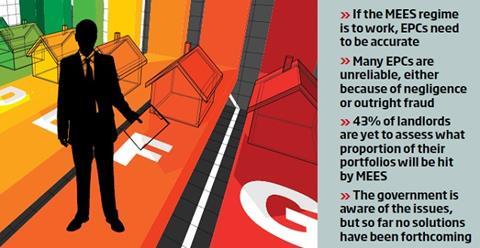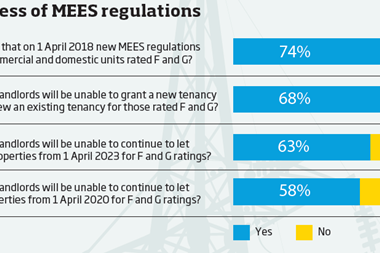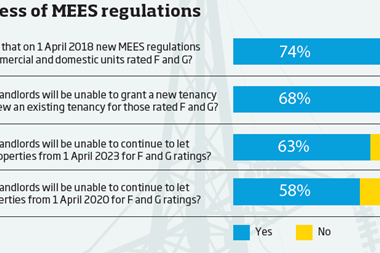The new Minimum Energy Efficiency Standards (MEES) come into play next year, so what does this mean and how can they affect value?

MEES will make it unlawful for properties with an F or G Energy Performance Certificate (EPC) to be let without implementing cost-effective energy efficiency improvements. And the implementation of these standards is just around the corner, coming into effect on 1 April 2018 for new leases and lease renewals/extensions where there is already an EPC. These will be extended from 1 April 2023 for all non-domestic existing leases.
It will be interesting to see how the market reacts to this legislation and what the potential impact on value will be. In terms of scope, MEES will apply to single-let, multi-let and any sub-leases that are over six months and under 99 years in length. JLL research based on the non-domestic EPC register has indicated that approximately 18% of recorded EPCs have F and G ratings.

Of course, the most practical immediate impact on any landlord will be a potential penalty for non-compliance starting at £5,000 and rising to a maximum of £150,000. However, there are more important areas than fines that may adversely affect the property.
For example, it would be anticipated that buildings not achieving the minimum standard will fail to attract tenants. As a result, letting risk will significantly increase and tenant retention will be adversely affected.
Proactive active management
Increased voids will result in service charge shortfalls and empty rates liabilities, so proactive asset management will be required to meet the relevant standards and avoid increased running costs. However, long-term efficiency measures will help to minimise costs as energy prices continue to rise, which should therefore benefit the service charge costs for multi-let buildings.
There is a recognition that more capital expenditure may be required to achieve the relevant EPC ratings. Key costs that will need to be considered to improve the performance and energy efficiency of a building include lighting, building management systems, plant, glazing and insulation.
Interestingly, moving from an EPC rating of F or G to E does not require substantial increased expenditure, as building management systems with appropriate sensors can make up the simple difference.
While the EPC rating itself is not a perfect way of measuring energy efficiency within a building, it has resulted in focusing the property industry on improving buildings or facing accelerated depreciation through legislation and changing market dynamics.
































No comments yet